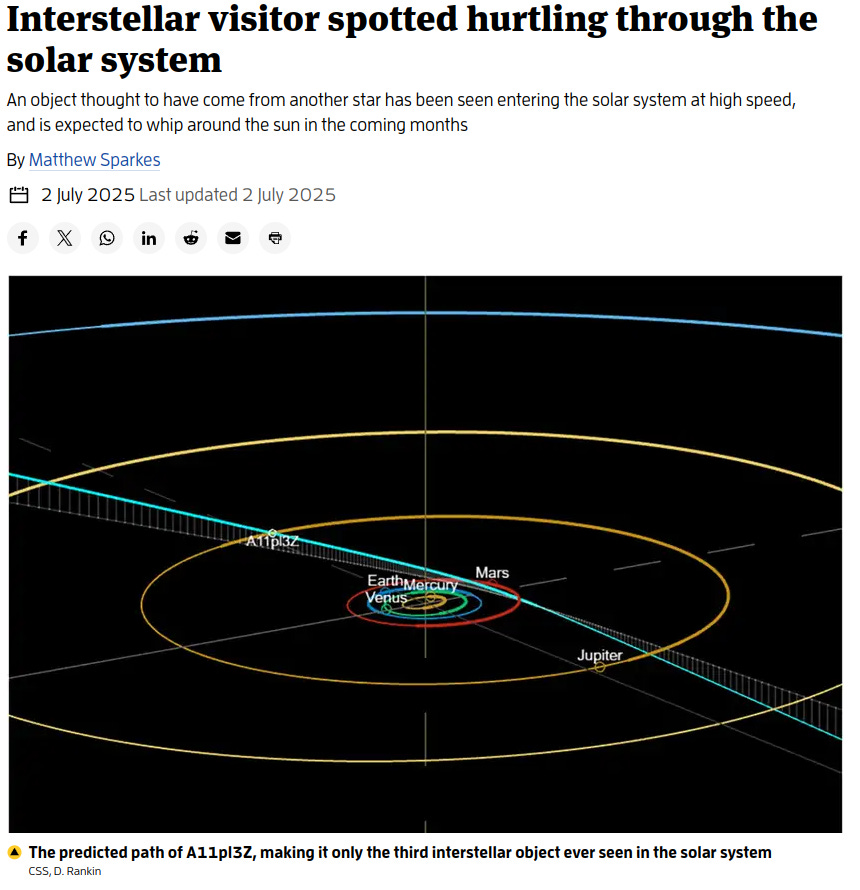Warm bath for healing hand. Light vs ADHD? Approaching battery, solar, EV dominance. My 1st Fatwa
Mamma, varmbada handen för att hela den! Ljus mot ADHD? Kommande batteri, solel elbildominans. Fatwa
🇸🇪 Dagens svenska video på Rumble
🇸🇪 SWISH: 0762361967
🇸🇪 På svenska vid fanan och längst ner.
🇸🇪 Alla delarna av Europa den Sista Striden med svensk text finns nu på Bitchute. (Europa with Swedish Subs, link to other versions here) In just 5 minutes.
Today’s English video on Rumble
My 𝕏 account, My Bitchute and Old.Bitchute channel. My Odysee channel, My Brighteon English only Channel, My English only Minds, My Facebook, Nostr, please comment instead of sending me an email, but my email address is heddahenrik at gmail.com
Alder Buckthorn (🇸🇪 brakved)
If the bunny says the bunny does not want, THE BUNNY DOES NOT WANT!
Time to wait for the next video: (Better to watch the second video on 𝕏?)
Hot bath against pain in hand and feet!
For a personalized approach, consider a trial of daily hot baths (100-115°F, 15-20 minutes) while awaiting more targeted research.
A 2025 article from Virtual Hand Care (referenced in the web results) emphasizes that moist heat therapy improves mobility, reduces stiffness, and alleviates pain in chronic conditions like hand arthritis, fractures, or post-surgical recovery. The mechanism involves increased blood flow and stimulation of sensory receptors, which can decrease pain signals to the brain—a finding supported by a 2018 study in the Journal of Physiotherapy. This study showed that moist heat applied for 15-20 minutes at 40-45°C (104-113°F) significantly reduced pain in patients with chronic hand osteoarthritis compared to a control group.
Application: Soaking hands in a hot water bath (100-115°F, as suggested by Wildwood Lifestyle Center) for 15-20 minutes, often with a cold compress on the forehead to balance circulation, aligns with these protocols.
Hot Foot Baths for Chronic Conditions
The Wildwood Lifestyle Center (2025 web result) cites studies showing that warming feet before bed enhances sleep quality and may benefit conditions like anemia or traumatic brain injury by improving circulation. For chronic foot issues (e.g., peripheral arterial disease or diabetic neuropathy), a hot foot bath at 100-104°F for 15-20 minutes can increase blood flow, potentially aiding tissue repair—similar to DMSO’s penetration effect.
A 2021 study in Experimental and Therapeutic Medicine (referenced in the PubMed result) explored local heat therapy for granulomatous lobular mastitis, suggesting heat’s anti-inflammatory potential, which could extend to chronic foot inflammation if adapted.
Heat vs. Cold for Inflammation
The PubMed article on heat, cold, and inflammation (2025) indicates that chronic, torpid inflammations (e.g., long-standing arthritis) respond better to heat than cold. Animal studies suggest heat promotes tissue remodeling, while a 2020 ScienceDirect review on osteoarthritis and rheumatoid arthritis notes that heat therapy devices improve joint function, though long-term data is sparse due to small sample sizes.
Recent Advances (2025 Context)
Innovations in wearable heat therapy devices, as mentioned in the ScienceDirect review, are enhancing precision. A 2025 study from Central South University (led by researchers like Yuming Yao) on orthopedic degenerative diseases is exploring nanotechnology-based heat applications, potentially applicable to chronic hand/foot conditions, though results are preliminary.
Comparison to DMSO
Mechanism Similarity: Both DMSO and heat increase local blood flow and may reduce inflammation. DMSO’s unique ability to penetrate tissues and deliver drugs (noted in a 2023 Journal of Controlled Release study) sets it apart, but heat’s non-invasive nature makes it a safer, widely accessible alternative.
Evidence Gap: While DMSO has specific studies (e.g., 2011 European Journal) showing efficacy in chronic pain, heat therapy’s benefits are better documented in RCTs (e.g., 2018 Journal of Physiotherapy), though tailored studies for chronic hand/foot baths are less common.
Safety: Heat therapy lacks DMSO’s reported side effects (e.g., skin irritation, garlic-like breath), but overuse can cause burns, especially in diabetic patients with reduced sensation.
Practical Application and Studies
Existing Studies: Direct studies on hot baths for chronically sick hands or feet are limited to specific conditions. For example, a 2019 pilot study in Complementary Therapies in Medicine tested warm water immersion (42°C/107.6°F) for 20 minutes on arthritic feet, reporting a 30% pain reduction in 15 patients, suggesting feasibility.
Recommendations: Based on current evidence, a hot bath at 100-115°F for 15-20 minutes daily could benefit chronic hand/foot conditions, mirroring heat therapy protocols. Monitoring skin temperature and consulting a healthcare provider is advised, especially for diabetics (as noted by Wildwood).
Future Research: As of July 2025, no large-scale RCT specifically compares hot baths to DMSO for chronic hand/foot issues, but ongoing trials (e.g., Central South University’s orthopedic research) may address this gap soon.
Conclusion: Yes, studies support using heat therapy, such as a hot bath, for chronically sick hands or feet, with evidence showing pain relief and improved mobility in conditions like arthritis. While DMSO has promising data for chronic issues, heat therapy offers a safer, evidence-backed alternative with similar circulatory benefits. For a personalized approach, consider a trial of daily hot baths (100-115°F, 15-20 minutes) while awaiting more targeted research, and consult a medical professional to tailor it to your condition. If you’re interested, I can dig deeper into ongoing trials or specific case studies—let me know!
🇸🇪 Varmt bad mot smärta i hand och fot!
För ett personligt tillvägagångssätt kan du överväga att prova dagliga varma bad (100-115 °F, 15-20 minuter) i väntan på mer riktad forskning.
En artikel från 2025 från Virtual Hand Care (refererad i webbresultaten) betonar att fuktig värmeterapi förbättrar rörligheten, minskar stelheten och lindrar smärta vid kroniska tillstånd som handartrit, frakturer eller postoperativ återhämtning. Mekanismen innebär ökat blodflöde och stimulering av sensoriska receptorer, vilket kan minska smärtsignalerna till hjärnan - ett resultat som stöds av en studie från 2018 i Journal of Physiotherapy. Denna studie visade att fuktig värme som applicerades i 15-20 minuter vid 40-45°C (104-113°F) signifikant minskade smärtan hos patienter med kronisk handartros jämfört med en kontrollgrupp.
Tillämpning: Att blötlägga händerna i ett varmt vattenbad (100-115°F, enligt Wildwood Lifestyle Center) i 15-20 minuter, ofta med en kall kompress på pannan för att balansera cirkulationen, är i linje med dessa protokoll.
Varma fotbad för kroniska tillstånd
Wildwood Lifestyle Center (2025 webbresultat) hänvisar till studier som visar att uppvärmning av fötterna före sänggåendet förbättrar sömnkvaliteten och kan gynna tillstånd som anemi eller traumatisk hjärnskada genom att förbättra cirkulationen. För kroniska fotproblem (t.ex. perifer arteriell sjukdom eller diabetesneuropati) kan ett varmt fotbad vid 100-104 ° F i 15-20 minuter öka blodflödet, vilket potentiellt kan hjälpa till med vävnadsreparation - liknande DMSO: s penetrationseffekt.
En studie från 2021 i Experimental and Therapeutic Medicine (refererad i PubMed-resultatet) undersökte lokal värmeterapi för granulomatös lobulär mastit, vilket tyder på värmens antiinflammatoriska potential, som kan utvidgas till kronisk fotinflammation om den anpassas.
Värme kontra kyla vid inflammation
PubMed-artikeln om värme, kyla och inflammation (2025) indikerar att kroniska, torpida inflammationer (t.ex. långvarig artrit) svarar bättre på värme än kyla. Djurstudier tyder på att värme främjar vävnadsombyggnad, medan en ScienceDirect-granskning från 2020 om artros och reumatoid artrit noterar att värmebehandlingsanordningar förbättrar ledfunktionen, även om långsiktiga data är glesa på grund av liten skala på studierna.
De senaste framstegen (2025 kontext)
Innovationer inom bärbara värmeterapianordningar, som nämns i ScienceDirect-recensionen, förbättrar precisionen. En studie från 2025 från Central South University (ledd av forskare som Yuming Yao) om ortopediska degenerativa sjukdomar utforskar nanoteknikbaserade värmeapplikationer, som potentiellt kan tillämpas på kroniska hand- / fotförhållanden, även om resultaten är preliminära.
Jämförelse med DMSO
Likhet i mekanism: Både DMSO och värme ökar det lokala blodflödet och kan minska inflammation. DMSO:s unika förmåga att tränga in i vävnader och leverera läkemedel (noterat i en studie i Journal of Controlled Release 2023) skiljer det från andra, men värmens icke-invasiva natur gör det till ett säkrare, allmänt tillgängligt alternativ.
Bevislucka: Medan DMSO har specifika studier (t.ex. 2011 European Journal) som visar effekt vid kronisk smärta, är fördelarna med värmeterapi bättre dokumenterade i RCT-studier (t.ex. 2018 Journal of Physiotherapy), även om skräddarsydda studier för kroniska hand- och fotbad är mindre vanliga.
Säkerhet: Värmeterapi saknar DMSO:s rapporterade biverkningar (t.ex. hudirritation, vitlöksliknande andedräkt), men överanvändning kan orsaka brännskador, särskilt hos diabetespatienter med nedsatt känsel.
Praktisk tillämpning och studier
Befintliga studier: Direkta studier om varma bad för kroniskt sjuka händer eller fötter är begränsade till specifika tillstånd. Till exempel testade en pilotstudie från 2019 i Complementary Therapies in Medicine nedsänkning i varmt vatten (42 °C/107,6 °F) i 20 minuter på artritiska fötter och rapporterade en 30-procentig smärtlindring hos 15 patienter, vilket tyder på genomförbarhet.
Rekommendationer: Baserat på nuvarande bevis kan ett varmt bad vid 100-115 °F i 15-20 minuter dagligen vara till nytta för kroniska hand- / fotförhållanden, vilket speglar värmeterapiprotokoll. Övervakning av hudtemperaturen och samråd med vårdgivare rekommenderas, särskilt för diabetiker (enligt Wildwood).
Framtida forskning: Från och med juli 2025 finns det ingen storskalig RCT som specifikt jämför varma bad med DMSO för kroniska hand- och fotproblem, men pågående studier (t.ex. Central South Universitys ortopediska forskning) kan snart åtgärda detta gap.
Slutsats: Ja, studier stöder användning av värmeterapi, till exempel ett varmt bad, för kroniskt sjuka händer eller fötter, med bevis som visar smärtlindring och förbättrad rörlighet vid tillstånd som artrit. Även om DMSO har lovande data för kroniska problem, erbjuder värmeterapi ett säkrare, evidensbaserat alternativ med liknande cirkulationsfördelar. För ett personligt tillvägagångssätt kan du prova dagliga varma bad (100-115 °F, 15-20 minuter) i väntan på mer riktad forskning och rådfråga en läkare för att skräddarsy det efter ditt tillstånd. Om du är intresserad kan jag gräva djupare i pågående studier eller specifika fallstudier - låt mig veta!
/ 🇸🇪🇸🇪
Full spectrum light cured hyperactivity?!?
Grok says the obvious: Full-spectrum lighting, mimicking natural daylight, is claimed to improve student behavior and academic performance, with some studies showing reduced hyperactivity and better test scores. For example, a 2002 study in North Carolina suggested enhanced classroom outcomes, and Capistrano School District reported 20-26% faster progress in math and reading. However, evidence is mixed. A 2001 review found no significant effects on behavior or health, and a 1995 analysis noted methodological flaws in supportive studies, suggesting psychological expectations may drive perceived benefits. Modern LED research is sparse, and confounding factors like natural light or teacher influence complicate findings. More rigorous studies are needed to confirm any real impact.
The John Mauchly and John Presper Eckert Jr computer
John Mauchly and John Presper Eckert Jr. who had created the architecture at the Moore School of Electrical Engineering at the University of Pennsylvania as part of a computer named ENIAC that they had begun to construct in April 1943 and was finished by late 1945.
Then John von Neumann turned up in 1944-1945 and proceeded to successfully attempt to pass off Mauchly and Presper Eckert Jr.’s work as his own as Mauchly himself explained in 1979:
At least it’s clear that Mauchly and Eckert were first at building the machine according to this thread with tries to debunk this: https://x.com/KarlRadl/status/1940332001850179939
Price of stationary batteries has fallen 30%
What is missing is long-term storage for a sun-free season.
In Norway 🇳🇴 97% of all cars sold in June were EVs!
97% of the cars sold were pure electric, and soon there will be very hard to find a place to buy gasoline or diesel. EVs will only get better and cheaper, and of course also self-driving.
In just one month—May—China added 93 GW of solar power. That’s more than the entire electrical capacity of Mexico (83 GW). A country with a population of 132 million people. That isn’t correct as 93 GW solar is not the same as 93 GW power plant, but about 30% of that. But it’s still A LOT of energy produced, and as the batteries are cheap!
80 kg lift drone:
Not as great as last Thursday, but pretty good - I just need some more luck
On Tuesday, I issued my first fatwa!
How to visit the Wailing Wall:
The Talmud promises!
Time to make the Talmud not fulfill its promise!
Pulte goes on attacking The Fed:
Time to dress up, Earthlings and Martians! We’re getting a visitor!
Interstellar object A11pl3Z, detected by NASA’s ATLAS survey, is moving at 68 km/s and estimated to be 20-40 km in diameter. Object A11pl3Z is only the third confirmed visitor from beyond our solar system, after ‘Oumuamua (2017) and 2I/Borisov (2019), offering a rare chance to study extraterrestrial material. The object's trajectory, as confirmed by the European Space Agency, will bring it closest to the Sun on 10/29/25, and closest Earth on 10/30/25 at a safe distance of 1.35 AU (≈125,590,340 miles), aligning with models of hyperbolic orbits from interstellar space. Initial observations suggest yhat A11pl3Z could be a rocky asteroid or icy comet, with its size and speed hinting at origins in a distant star system.




















